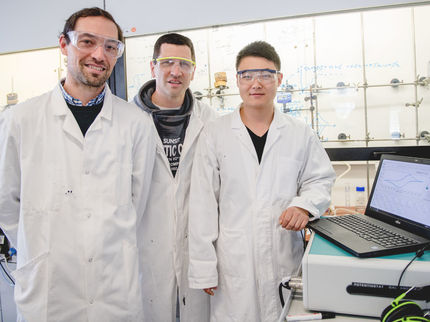Novel organic metal hybrids that will revolutionize materials science and chemical engineering
A novel class of hybrid materials made from metals and organic compounds is changing the face of solid state chemistry and materials science just 10 years after its discovery, with applications already in safe storage of highly inflammable gases such as hydrogen and methane. Europe is aiming to capitalise on core strengths in the field and build critical mass by combining the diverse range of skills required within a coherent research network, following a major workshop organised by the European Science Foundation (ESF).
The materials called MOFs (Metal Organic Frameworks) represent one of the biggest breakthroughs in solid state science whose potential is only just being realised, according to the ESF workshop convenor Gérard Férey. "The domain is currently exploding, and there are so many potential applications that it is difficult to decide how to prioritise them. The only limit is our imagination," said Férey.
There is no doubt though that the first big application of MOFs - storage of gases - will be highly important, given the urgency of developing alternatives to fossil fuels for automobiles. "For hydrogen storage, MOFs are already used, and many carmakers have these products in prototypes," said Férey.
MOFs are porous materials with microscopic sized holes, resembling honeycombs at molecular dimensions. This property of having astronomical numbers of tiny holes within a relatively small volume can be exploited in various ways, one of which is as a repository for gases. Gas molecules diffuse into the MOF solid and are contained within its pores. In the case of gas storage, MOFs offer the crucial advantage of soaking up some of the gas pressure exerted by the molecules. This makes hydrogen derived from non-fossil energy sources such as fuel cells, or even genetically engineered plants, potentially viable as a fuel for cars while the alternative of pressurised canisters is not. The key difference is that the amount of gas stored in a conventional cylinder at say 200 atmospheres pressure could be accommodated in an MOF vessel of the same size at just 30 atmospheres, which is much safer.
The porous nature of MOFs enables them to be exploited in quite another way as catalysts to accelerate chemical reactions for a wide variety of materials production and pharmaceutical applications, although this field, as Férey noted, is still in its infancy. Yet already the field is gaining interest beyond academia from serious companies, with a significant development at the ESF workshop being the presence and support of German chemicals giant BASF. This in turn has provided high endorsement of the field's potential and has stimulated interest from other companies, according to Férey.
But several challenges remain before this potential can be realised, the first one being to assemble research and development teams with the right body of skills. As Férey noted, many of the skills already exist but the researchers need to expand their horizons and focus more broadly on the big picture beyond their specialised domains. There is also the technical challenge of learning first how these materials are formed, and then applying the knowledge to design MOFs matched to specific requirements. MOFs are crystalline solids that form in highly regular patterns from solutions, just as salts and sugars do. Researchers need to learn how to manipulate the starting conditions to obtain just the crystalline composition and arrangement they want.
Topics
Organizations
Other news from the department science

Get the chemical industry in your inbox
By submitting this form you agree that LUMITOS AG will send you the newsletter(s) selected above by email. Your data will not be passed on to third parties. Your data will be stored and processed in accordance with our data protection regulations. LUMITOS may contact you by email for the purpose of advertising or market and opinion surveys. You can revoke your consent at any time without giving reasons to LUMITOS AG, Ernst-Augustin-Str. 2, 12489 Berlin, Germany or by e-mail at revoke@lumitos.com with effect for the future. In addition, each email contains a link to unsubscribe from the corresponding newsletter.



























































